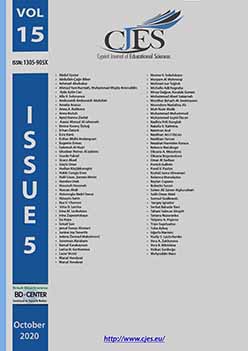Demographic factors associated with young children’s motor creativity
Demographic factors associated with young children’s motor creativity
Author(s): Nezahat Hamiden Karaca, Halil Uzun, Sermin Metin, Neriman AralSubject(s): Education, Family and social welfare, Demography and human biology
Published by: Birlesik Dunya Yenilik Arastirma ve Yayincilik Merkezi
Keywords: Creativity; creative thinking; motor creativity;
Summary/Abstract: This study investigated factors that are associated with the creative motor skills of young children. We recruited through random sampling 233 typically developing children attending preschool or kindergarten in Afyonkarahisar, Turkey. We administered a “General Information Form” to gather the children’s demographic characteristics and the “Thinking Creatively in Action and Movement Test” to evaluate the children’s creative motor skills level. We analyzed the children and familys’ demographic characteristics with frequency and percentage values, and we analyzed the TCAM with multiple linear regression analysis to determine whether independent variables predicted creativity on the TCAM. Our results showed that, among the subdimensions of the TCAM, the mother’s age and profession best predicted the sub-dimension of fluency and the mother’s profession best predicted the sub-dimension of novelty. Regarding, the sub-dimension of children's creative motor-imagination, neither the children’s gender or age, the parents’ age, education or occupation were significant predictors.
Journal: Kıbrıslı Eğitim Bilimleri Dergisi
- Issue Year: 15/2020
- Issue No: 5
- Page Range: 1307-1319
- Page Count: 13
- Language: English

